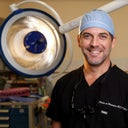Posted underBreast Reconstruction q&a
How Much Fluid Should Be Draining in a Day in Order for my Jp Drains to Be Taken Out?
two children twenties not over weight (just extra skin) good shape
Answers (14)
From board-certified doctors and trusted medical professionals
More Breast Reconstruction Questions
See all Breast Reconstruction Q&AWE SEND PRETTY
EMAILS
What’s trending? Who’s turning heads? Which TikTok myths need busting? We’ve got you. No fluff, no gatekeeping—just real talk. Get our free, unfiltered newsletter.






